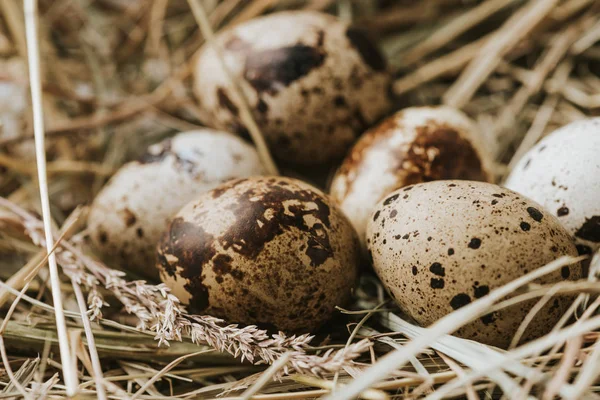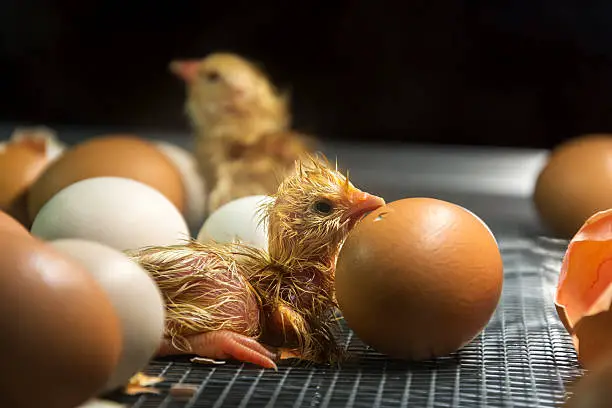Caring for injured chicks can be challenging, mainly because most people who raise chickens are not familiar with what to do after an injury. Fortunately, chicks are very resilient and are able to heal easily from many traumas. There are several precautions that must be taken when caring for chicks. The first thing to remember when handling them is to wear gloves. This is to protect yourself from any diseases carried by the chick and to eliminate the risk of infecting the injury.
Secondly, the chick needs to be captured but shouldn’t be chased. High impact activity such as running could cause the chick to bleed out and exacerbate their injuries. The proper way to capture a chick is to corner it and then close in on it slowly, limiting its stress. Before you actually pick it up allow it to calm down and then pick it up gently. After examining it and administering first aid, it may be necessary to isolate the chick to prevent it from coming under attack from the other chickens if they were the cause of the injury.
While examining the chick, you may notice wounds and possibly some bleeding. To determine the depth of a wound you’ll need to lift up the feathers and look closely. The depth of the wound will indicate if saving the chick is possible. You should be prepared for situations where attempting to give first aid really won’t save the chick. In such situations, it may be advisable to put the chick out of its misery and euthanize it. Unfortunately, you’ll need to be able to make life or death decisions each time you attempt to help an injured chick.
If the injury can be triaged, isolate the chick and keep it hydrated and warm (their temperature should be between 80 – 85 degrees Fahrenheit). If you are using a heat lamp for warmth, check to see that is just warm enough, not so hot it burns. You want to keep the chick comfortable. On that same note, when it’s very hot outside, try to keep it cool and always place a small bowl of water before the chick to keep it hydrated.
Chick injuries like those sustained from a fight with other chickens can often be aided with some cleaning and isolation. Some leg or foot injuries, eye injuries and neck injuries can also be triaged. If your chickens are pecking each other, this leads to a lot of chick injuries. Separate the injured chick and clean the wounds. Allow the chicks to stay in isolation from the other chickens until they heal. Many times this is an essential step needed to ensure these chick injuries get an opportunity to heal.
Chick injuries to the legs require some help if the chick is unable to walk. You have the option of cleaning the injury, isolating the chick and allowing the injury to heal naturally. Your next option is based on whether the leg is broken. Even with broken legs, if the chick is able to move, you may be able to allow it to heal on its own. If the idea of leaving the chick in that state is really troubling you, you can apply a splint so it will reset with some resemblance to the original leg. The chick may not respond well to having the foreign matter attached to its leg, so be prepared for its attempts to free itself from the splint. If you can’t apply a splint or decide not to, the bird will probably heal. It may experience some difficulty when it heals as no medical attention might lead to the leg being malformed. Consequently, it may have some difficulty when it walks.
Injuries that involve feet can be treated as well. Clean the wound with gauze and water. You may add a small amount of hydrogen peroxide or use Novalsan. If bandages are needed, wrap the wound in non-stick bandaging. Cover it loosely with vet wrap and allow a sufficient amount of time to pass before checking to see if the wound is healing.
Other common injuries to chicks are eye injury. These chick injuries can originate from a predator attack or a chicken pecking. You should clean the injury and isolate the chick while it heals. The chick may be blind in one eye, but it will be able to survive.
Beak injuries do happen and in many instances, you can save the chick. These types of chick injuries could prevent your chick from hunting for food, however, it doesn’t interfere with eating. If the injury results in a small portion of the missing beak, the chick will be fine. If a large portion is missing, you may need to resort to feeding the chick yourself or gluing the beak back on as some owners have done. If you don’t choose either option, you will probably need to euthanize the chick.
Caring for chick injuries may seem daunting, but it can be done with great success. The top five injuries that chicks suffer are injuries to the body, legs, feet, eyes and beaks. As always the owner will have to decide if the chick can be saved with triage or if the chick needs to be put down.






While placing my baby chick back in the box, she flapped about and I accidentally dropped her. She cannot walk now and falls over. She is lying down and is leaning to one side. There is no blood. Her leg looks dislocated.
What can I do?
Will she survive the night?
Yes, she will survive.
My baby chick is one day old out of the incubator, can’t walk and is flopping around, what can I do to help?